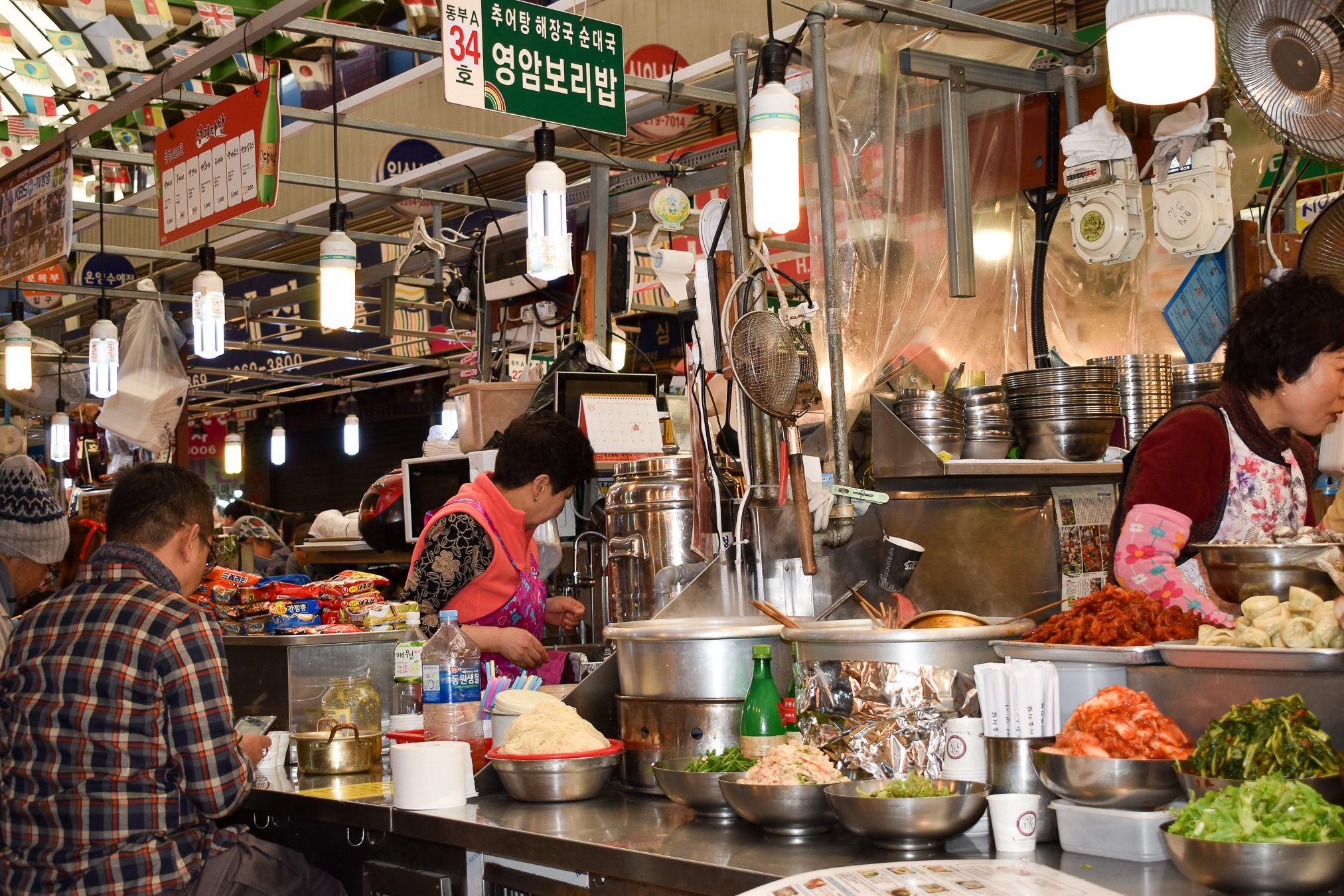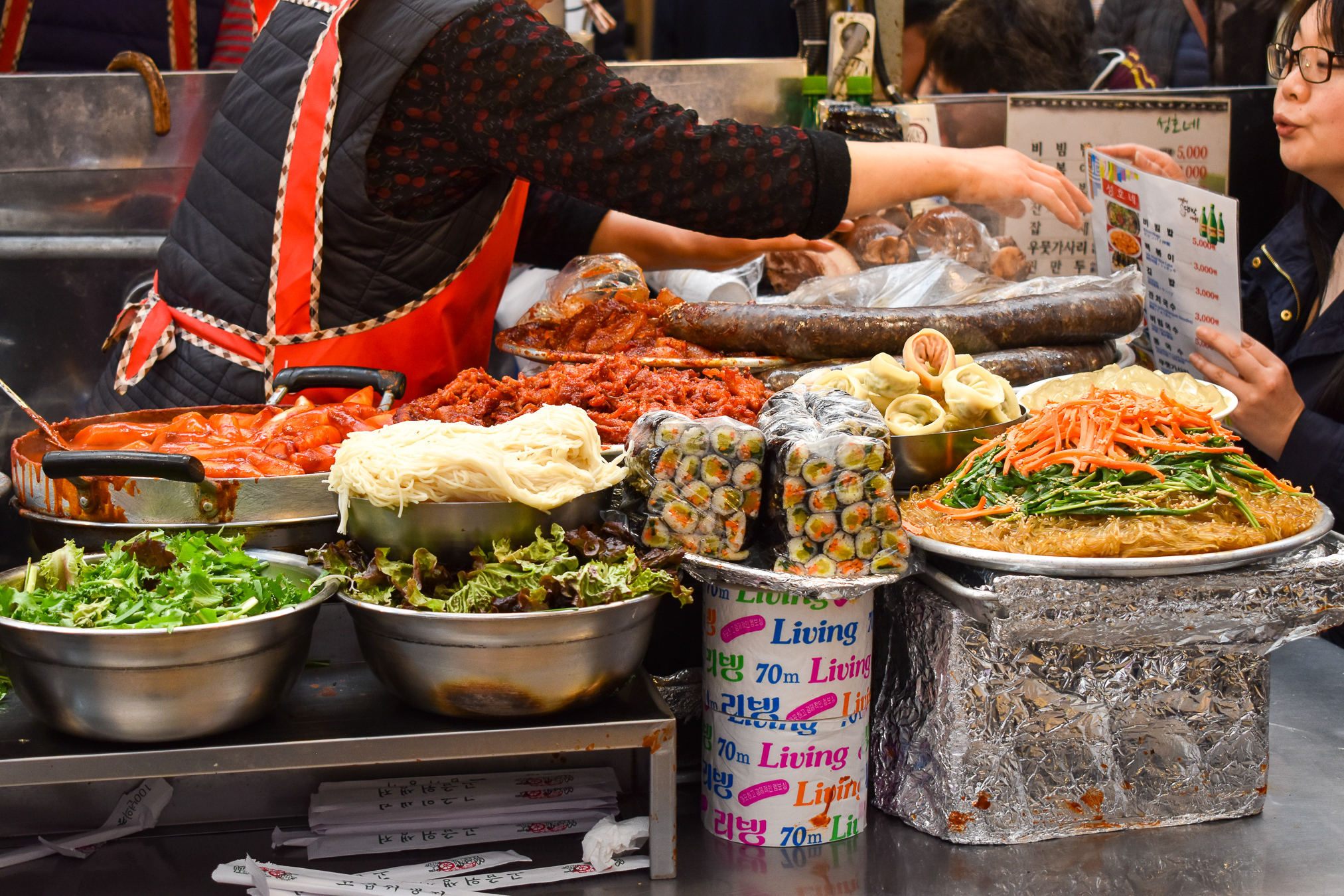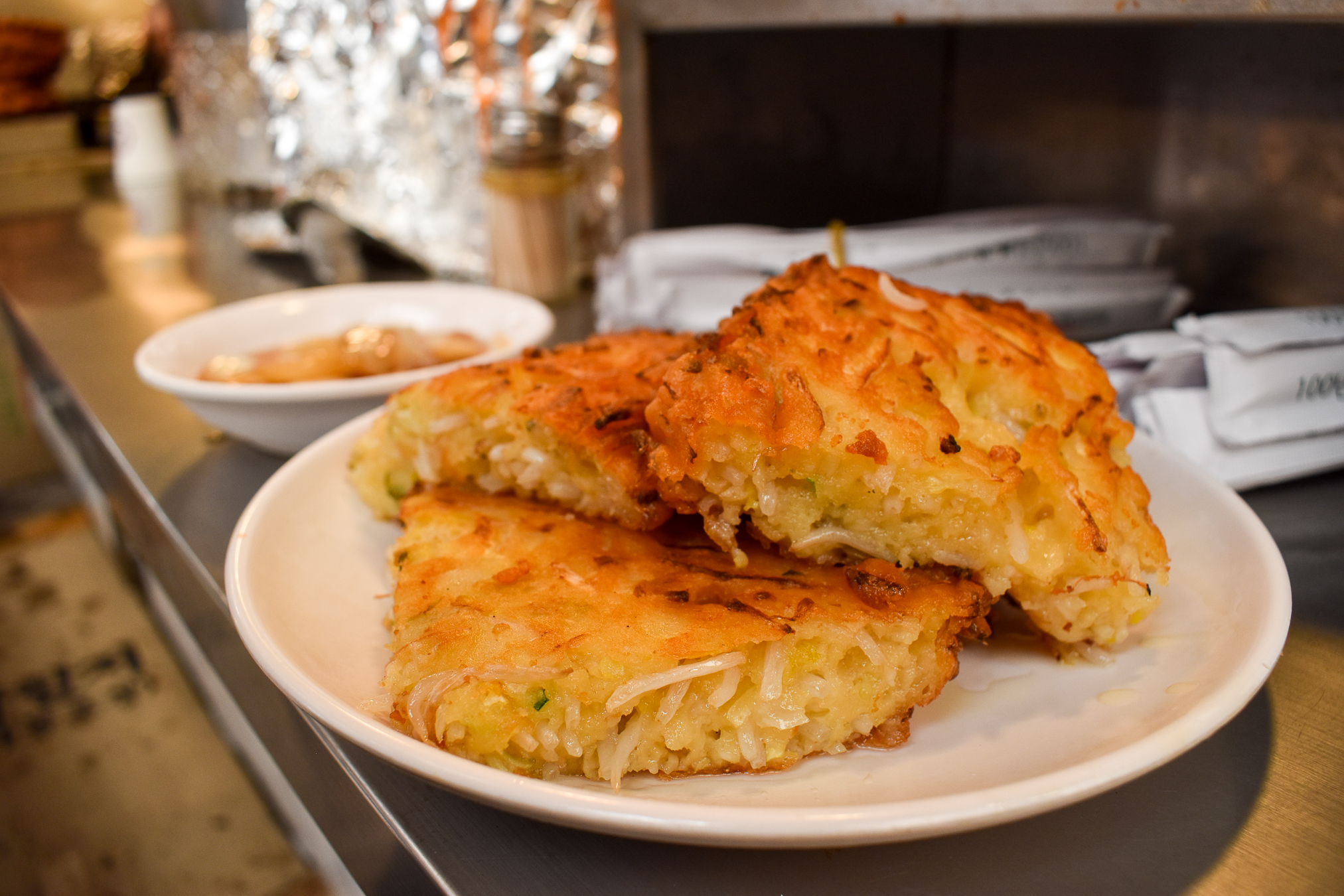- 한국어
- English
- 日本語
- 中文
- العربية
- Español
- Français
- Deutsch
- Pусский
- Tiếng Việt
- Indonesian
By Honorary Reporter Laura Lopez Velazquez from Mexico
Photo = Laura Lopez Velazquez
One of the best ways to learn about a country's customs and culture is by visiting traditional markets to discover the foods and items the natives commonly buy. I researched Korean traditional markets from travel blogs. So during my visit to Korea in 2019, I headed for the nation's oldest traditional market of Gwangjang in Seoul's Jongno-gu District.
The name "Gwangjang" is derived from the market being between the bridges Gwangkyo and Jangkyo, and the venue was formerly known as Dongdaemun Market. Founded in 1905, the market is the largest of its kind in Korea with over a century of history.

Gwangjang Market is a haven for traditional Korean cuisine.
While at this market, I noticed how the attitude of the people there and lively atmosphere were similar to those of markets in Mexico. The cheerful atmosphere made me feel like I was in a market in Mexico. Korean ladies were so friendly toward foreign customers. Everyone sat together and those who came alone just sat next to someone else. A rather unique sight was hanging rolls of toilet paper used instead of napkins.
Available items
The groceries at the market include basics such as fruits, vegetables, fish, meat, bread and traditional candy. Certain places sell accessories, hats, ancient and modern clothes and Hanbok, with others hawk medicinal products, home appliances, handicrafts, crockery, kitchen utensils and souvenirs.
Traditional foods
Since my visit was in 2019, I experienced the true essence of Gwangjang Market before the pandemic hit as it was packed with tourists and nearby residents of all ages. The ceiling was decorated with the flags of numerous countries, and the food stalls were full of diners trying the flavors Korean food has to offer.

Food stalls are a big draw of Gwangjang Market.
The main section of the market is dedicated to food, one of the most popular being bindaetteok, or fried mung bean pancakes that traditionally was consumed by the poor. Unaware of this food's popularity and importance, I decided to try it and was taken by its delicious smell and crunchy texture. The difficult part was choosing where to eat it since many stalls sold it.

Bindaetteok is a fried mung bean pancake that is a specialty of Gwangjang Market.
In addition, the seafood sold here is so fresh that visitors can see marine life swimming in fish tanks. For something light and sweet, stalls offer drinks made with natural fruit. Other popular and delicious foods to try here are mayak gimbap (mini seaweed rice rolls), kimchi mandu (dumplings), sundae (pig intestine), kalguksu (hand-pulled wheat flour noodles), jokbal (pig's feet), hoe (raw fish), hotteok (sweet bun with filling) and a variety of kimchi.
Despite the passage of time and the emergence of more modern markets, Gwangjang Market remains a favorite for both Koreans and foreign tourists due to its long history and tradition.
enny0611@korea.kr
*This article is written by a Korea.net Honorary Reporter. Our group of Honorary Reporters are from all around the world, and they share with Korea.net their love and passion for all things Korean.